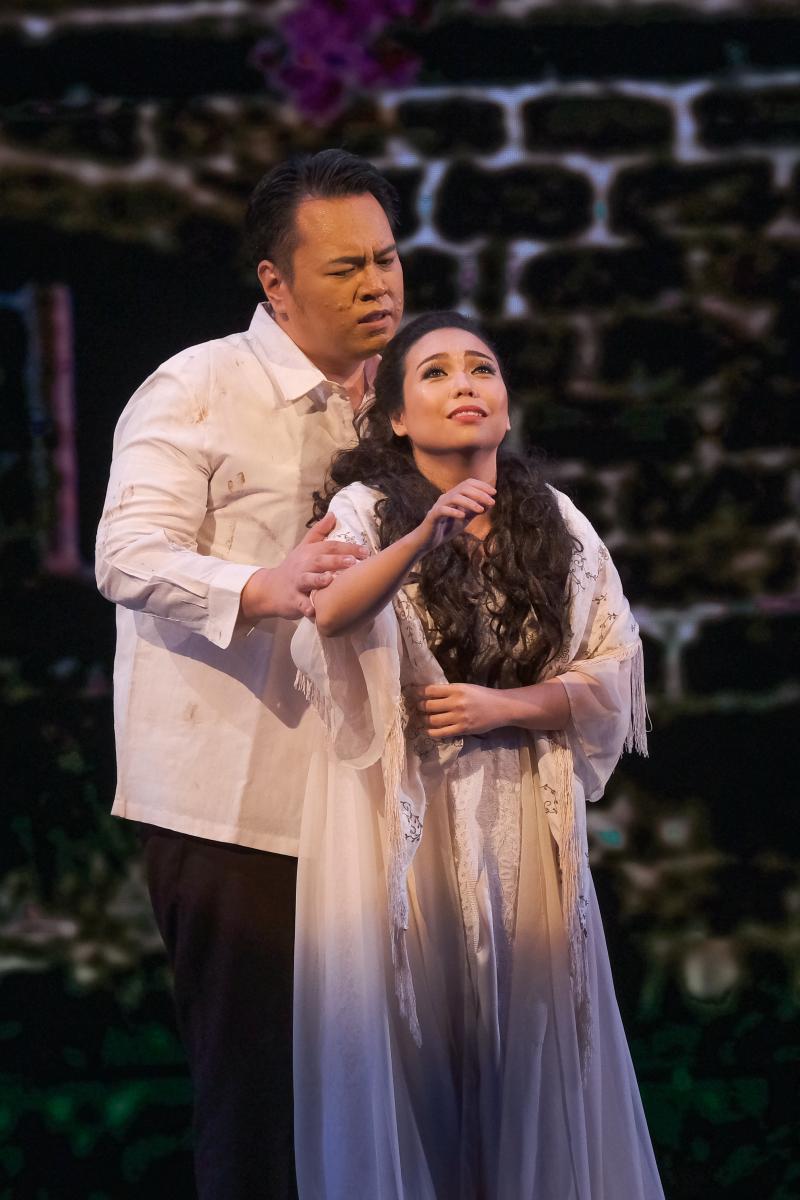Review: Here's Hoping For The Return of the People's Opera, NOLI ME TANGERE
 Manila, Philippines--Gone are the days when the opera is treated like an old-world passion and a cultural event where people are required to dress to the nines. The arrival of National Artists Guillermo Tolentino and Felipe Padilla de Leon's "Noli Me Tangere, The Opera" for the nth time in Manila was welcomed mostly by young people who were just too eager to bring to life the characters whom they only met in school. For only a limited run of just three shows, "Noli" at the Cultural Center of the Philippines' (CCP) Main Theatre became a hotspot where teachers, students, and music enthusiasts converge to celebrate a novel, written by National Hero Jose Rizal, that awakened a sleeping nation towards consciousness and obscurity.
Manila, Philippines--Gone are the days when the opera is treated like an old-world passion and a cultural event where people are required to dress to the nines. The arrival of National Artists Guillermo Tolentino and Felipe Padilla de Leon's "Noli Me Tangere, The Opera" for the nth time in Manila was welcomed mostly by young people who were just too eager to bring to life the characters whom they only met in school. For only a limited run of just three shows, "Noli" at the Cultural Center of the Philippines' (CCP) Main Theatre became a hotspot where teachers, students, and music enthusiasts converge to celebrate a novel, written by National Hero Jose Rizal, that awakened a sleeping nation towards consciousness and obscurity.
Set in the latter years of Spanish Philippines, "Noli" only has one message to its viewers: to bring about a collective memory of greatness to a nation crippled by the tragedies of history. Timely as it seems, the production symbolically opens the 50th Year of the CCP side-by-side in a period where the Filipinos once more would be subjected to a test: this time for the 2019 mid-term elections. Seldom do we realize that productions such as these do not only exist for the obvious value for money argument (students get 50% discount) but in a larger note an artistic interpretation of a National Treasure that is available to all Filipinos. It inspires more than it motivates and emotional, too, as it speaks of national pride. Perhaps a three-day sojourn is not enough but as they say, "beautiful things do not stay long to prolong its beauty and gusto."
"Noli" as the talk of the town is an understatement as Filipinos abroad and even expatriates traveled far and wide just to see what can be considered the country's National Opera. All shows were sold out giving a clear message that the crowd is hungry for more.
It is, however, unfair to compare past "Noli" productions with this. The J&S Productions, spearheaded by New York-based Filipinos Jerry Sibal and Edwin Josue, made sure that this version would be simpler but this kind of "simplicity" made the show closer and more beloved by the people. The sets were just plain LED monitors and this ensured that spectators would be glued to the actors. The emotions were outpouring as obvious sobs were heard all over the corners of the 1,821 seating capacity theatre. The performers and the musicians, to note, were mostly new blood and therefore this "Noli" has the potential to bring them closer to their artistic goals. To play in the CCP is a dream but to perform in the CCP in "Noli" is a two-pronged achievement rolled into one.
The line of every song and aria emitted a resounding pride that Filipinos are equipped to write an opus and execute it in its most gracious way. The fact that it was sung in Filipino made it more meaningful that pierces every heart in the theatre. The combined sense of Nationalism and joy seemed to fill a theatre that has long been regarded as the temple of "the True, the Good, and the Beautiful" (CCP's Motto).
 Perhaps the song "Sa Lupang Pangako"--the melancholic duet of Ibarra and Maria Clara--summarizes the nation's quest and could very well be the Opera's contribution to the country's songbook.
Perhaps the song "Sa Lupang Pangako"--the melancholic duet of Ibarra and Maria Clara--summarizes the nation's quest and could very well be the Opera's contribution to the country's songbook.
The country is enjoying a chapter of its history where there is a revival of Filipinism and the sudden rise of pride among Filipinos and this production only feeds to the needs of the masses. This short visit of "Noli" at the CCP is honestly not enough considering the number of theatergoers willing to brave Manila's traffic just to see it live. Here is to hoping for the return of the people's opera.
Get updates on "Noli Me Tangere, The Opera" on Facebook.
Photos: Mark Francis Parallag
Reader Reviews

Videos
